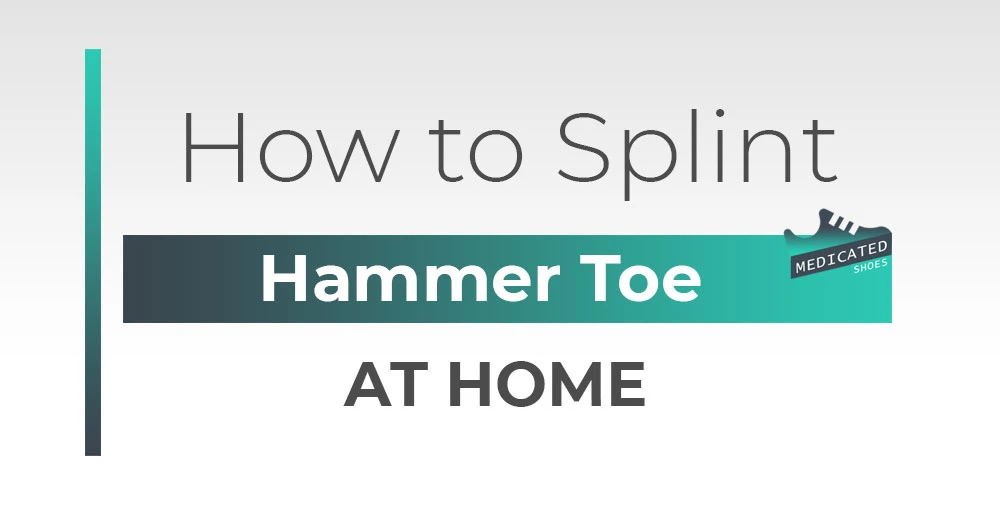If you are experiencing the pain and discomfort of a hammer toe, you may be wondering if there is a way to treat it at home. The good news is that you can splint your hammer toe at home with just a few simple supplies and a bit of knowledge.
In this blog post, we will discuss the basics of hammer toe splinting and provide step-by-step instructions on how to splint a hammer toe at home. By following our recommendations, you can find relief and improve your foot function. So, let’s get started and learn how to splint a hammer toe at home.
What is a Hammer Toe Splint?
A hammer toe splint is a device that corrects the alignment of a bent or curled toe due to muscle imbalance or injury. It is typically made from soft materials such as silicone or foam, which are comfortable to wear and can be easily adjusted to fit your foot.
It consists of a padded ring and a strap that stretches and holds the toe in a straighter position, reducing pain and pressure on the toe joint. It can be worn during the day or at night and can prevent further deformity and improve the appearance and function of the toe.
How to Splint a Hammer Toe at Home
Using a hammer-toe splint at home is easy and can be done in just a few simple steps. Here’s what you’ll need:
What You’ll Need
Before you begin, gather the following supplies:
- A toe splint or buddy tape (you can also use medical tape or adhesive bandages)
- A clean, dry towel
- A pair of comfortable, well-fitting shoes with a wide-toe box
Step 1: Clean and Dry the Affected Toe
Before you apply the splint, make sure your foot is clean and dry. Wash your foot with soap and water, making sure to clean around the affected toe. Pat your foot dry with a clean towel, ensuring the area between your toes is dry as well.
Step 2: Choose the Right Splint
There are a few different types of splints you can use for hammer toe:
- Toe splint: A toe splint is a small device designed to hold the affected toe in a straightened position. They can be purchased at most pharmacies or online.
- Buddy tape: This involves taping the affected toe to the neighboring toe for support. You can use medical tape or adhesive bandages for this purpose.
Choose the splint that best suits your needs and comfort level.
Step 3: Apply the Splint
To apply the splint, follow these steps:
If using a toe splint:
- Gently straighten your affected toe.
- Place the toe splint on the affected toe, following the product instructions. Ensure the splint fits snugly but not too tight to avoid restricting blood flow.
- Secure the splint in place, as directed by the product instructions.
If using buddy tape:
- Gently straighten your affected toe.
- Cut a piece of tape or bandage long enough to wrap around both the affected toe and the neighboring toe.
- Place the tape under the two toes, with the sticky side facing up.
- Gently wrap the tape around both toes, keeping them straight and aligned. Make sure the tape is snug but not too tight to avoid restricting blood flow.
Step 4: Wear Appropriate Footwear
Wearing shoes with a wide toe box and sufficient arch support is crucial when dealing with hammer toe. This helps to reduce pressure on the toe and allows room for the splint. Avoid wearing high heels or shoes with narrow-toe boxes, as they can exacerbate the problem.
Step 5: Monitor and Adjust
Check your splinted toe regularly to ensure it remains in the correct position and that there are no signs of irritation or restricted blood flow. If you experience discomfort, remove the splint and reapply it more loosely. If pain persists, consult a healthcare professional.
Do Splints Help Hammer Toe?
Yes, splints can help with hammer toe. Splints are designed to keep the toe in a straight position and help reduce pain and discomfort. They can also help prevent further deformity.
Conclusion
Splinting a hammer toe at home can provide temporary relief from pain and discomfort, but it’s essential to consult a healthcare professional for a long-term solution. They may recommend physical therapy, custom orthotics, or in severe cases surgery. In the meantime follow our step-by-step guide to splint your hammer toe comfortably and safely at home.

